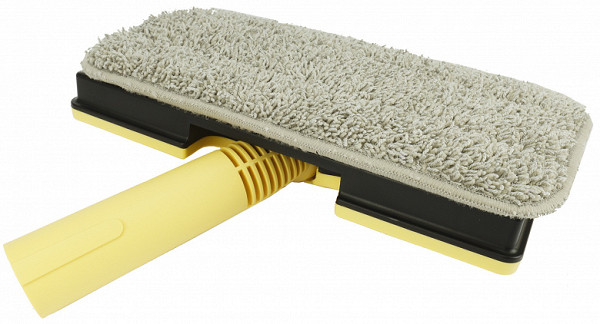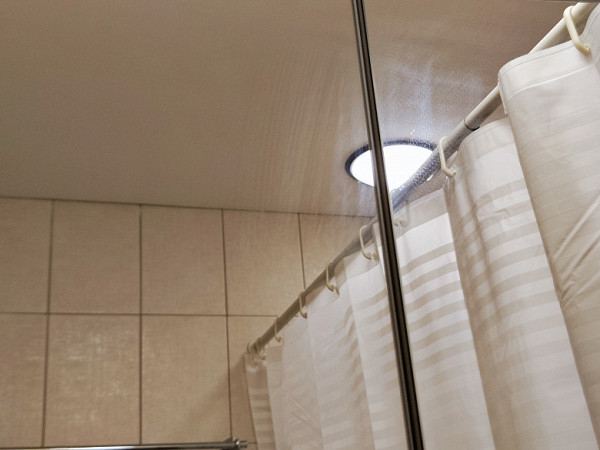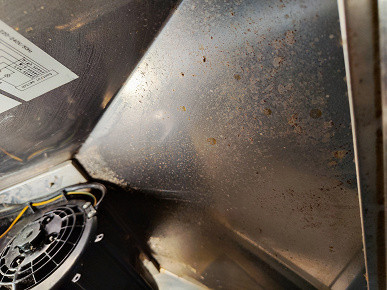The manufacturer claims that Polaris PSC 1711C is a multifunctional and highly effective steam cleaner that can effectively combat dirt in the home without the use of chemicals. The steam generator is especially useful for allergy sufferers and those who, for various reasons, prefer to do without household chemicals.

Numerous attachments and stated technical characteristics can confirm the manufacturer’s words. But how will the device perform in real conditions, and is it really as good as it claims? We received answers to these questions as a result of a thorough inspection and test operation of the steam cleaner.
Characteristics
| Manufacturer | Polaris |
|---|---|
| Model | PSC 1711C |
| Type | steam cleaner |
| Country of manufacture | China |
| Guarantee | 3 years |
| Life time * | 3 years |
| Power | 1500-1700 W |
| Operating modes | two: eco and turbo |
| Operating pressure | There are 5 |
| Steam power | 50 g/min |
| Time to prepare for work | 25 s |
| Water tank volume | 360 ml |
| Tank material | plastic |
| Corpus material | plastic |
| Case color | yellow/black |
| Accessories | floor mop, two cloths for a floor mop, a scraper for heavy dirt, a wide nylon brush, a mini steam mop, a glass/mirror cleaning attachment, a cloth for a mini mop, an extension steam hose, an extension nozzle, brushes: round, nylon, stainless steel, curved nozzle, measuring cup |
| Peculiarities | Auto shut-off when water tank is empty, floor storage stand |
| Flexible steam hose length | 1 m |
| Overall height of connecting tubes | 86 cm |
| Weight of the device without attachments with a tank filled with water | 1.48 kg |
| Dimensions of the steam mop assembly (W×H×D) | 25×120×25 cm |
| Network cable length | 7 m |
* Contrary to popular belief, this is not the time limit after which the device will necessarily break down. However, after this period, the manufacturer ceases to bear any responsibility for its performance and has the right to refuse to repair it, even for a fee.
Equipment
The steam cleaner is packaged in two boxes: a protective shipping box and a colorful one, which contains photographs of the device, its characteristics and features. The design is calm, the information is provided in full for quick reference. The box is equipped with a convenient carrying handle.

Upon opening the package, we found a variety of accessories. We immediately grouped them by purpose:
- steam cleaner body with attached water tank
- floor storage platform, accessories for it: telescopic tube, auxiliary stands for brushes, holders for storing cord and steam mop support
- connecting pipes for a steam mop, floor mop attachment assembly, two napkins for it
- extension steam hose, extension nozzle
- mini mop with attachment for cleaning glass and mirrors, as well as a steam cloth
- attachments: scraper for heavy dirt, curved nozzle, stainless steel brush, nylon brush, round sponge brush, wide nylon brush
- measuring cup
- set of documentation: instruction manual, warranty card, leaflet with information about the device
All this is not just folded, but neatly organized with the help of internal cardboard boxes and inserts that organize the space. Plastic bags protect the surface of accessories and accumulate attachments by category. Putting the device and its accessories back into the box requires some effort.
At first sight
After removing the contents of the package, you may be confused by the number of accessories. It is best to organize them into categories or immediately assemble a storage stand, which will significantly reduce the number of small parts. We will do so, while simultaneously carefully studying each subject.

The floor stand is an almost square plastic platform (30.5x31.5 cm).

Several black plastic parts are intuitively inserted into the holes it contains.

In general, assembling the floor stand is not difficult, but it is still worth checking the instructions. We install a metal telescopic tube on the platform with the fixed parts and then attach the holders to it.

The telescopic tube has a standard shape and design.

When placing the plastic holders, we had to fiddle around to figure out which part went where and what it was for.

The holders are easily fixed both on the telescopic stand and on the connecting tubes of the mop, and reliably hold the device in place.

Two holders form a design for convenient storage of a seven-meter power cord.

The floor storage stand is really quite convenient. All accessories and attachments of the steam cleaner can be installed in the holes and pins provided for this purpose.

In addition to being neat and compact, the design is stable and does not try to tip over or roll over.

Phew, the stand is assembled, now you can examine the attachments and the device itself. There is a control button on top of the steam cleaner. On the side of the handle there is a nameplate with information about the device. On the opposite side is a steam nozzle. There is a water tank attached at the bottom.

The reservoir is made of transparent plastic, allowing the user to always see the water level and timely determine when to fill it. The hole with a diameter of 2 cm is covered with a silicone cover, which is moved to the side and easily fixed back.

There are hints on the outside of the body to help you secure the water tank.

To use the device as a steam mop, connecting pipes must be connected to the steam nozzle. These metal parts with plastic clips attach easily to each other and to the steam generator nozzle in an intuitive way. The rest of the accessories are fixed in the same way. The attachments are put on and taken off tightly, so they do not play and do not jump out of the connections.

Then we find a floor mop. It consists of a working surface and a holder to which a steam hose is connected. The parts are connected by a ball joint, which ensures maneuverability of the mop and allows the platform to move laterally relative to the vertical connecting tubes.

The working side has dimensions of 24x12 cm, which provides comfort for small cleaning. The exit point of the steam jet is highlighted with a yellow insert. There are Velcro strips around the perimeter that hold the napkin in place.

The napkin is held tightly by Velcro, and you need to make some effort to remove it.

The Polaris PSC 1711C steam cleaner is equipped with two steam mop cloths.

When assembled, the steam mop looks like this:

The mini-mop, as expected, is smaller in size than the floor mop — 15x6.5 cm. It was equipped with a nozzle for cleaning glass and mirrors. There is a series of holes in the center of the head that allow the steam coming out of the mini mop to pass through. If you remove the glass cleaning attachment, you can put a cloth cover on the mini-mop and use the device to clean upholstered furniture, curtains, other textiles and steam clothes.

The steam cleaner comes with a variety of attachments and brushes for different types of cleaning: a squeegee for tough dirt, a curved nozzle for hard-to-reach areas and narrow crevices, a stainless steel brush, a nylon brush, a wide nylon brush and a round sponge brush.

Some of the accessories can be attached directly to the body's steam nozzle, while others (the curved nozzle and three brushes) can only be connected via an extension nozzle or extension hose.

The length of the extension hose is 1 m, in our opinion, sufficient to reach the farthest corners and narrow places in the room.

The straight tube extends the nozzle by 21 cm.


After assembling the Polaris PSC 1711C steam cleaner, the initial feeling of slight horror from the numerous details turned into interest. The device left the impression of being well made and multifunctional. We'll find out a little later how he copes with the job.
Instructions
The documentation package for the Polaris PSC 1711C steam cleaner includes: an instruction manual, a warranty card and a fold-out leaflet with the most important information about the device.

The leaflet lists the features of preparing the device for operation and the purpose of each attachment. This is convenient for users familiar with steam cleaners, since they do not need to study the entire manual, but can focus on the features of a specific model. The document is also useful for beginners, helping them quickly get used to the device. The instructions consist of 42 pages and are presented in two languages, with the Russian part coming first. It covers all aspects of interaction with the steam cleaner.

The manual contains many color illustrations to help you understand the device and its attachments. Graphic diagrams make operating rules and procedures easier to understand. The manual is easy to read and there are minimal questions left after studying it.
Control
The steam generator control button is located on the top of the housing. It stands out against a dark background, which eliminates the possibility of confusing it with other elements. Next to the button there is an icon reminding you to be careful and a steam indicator.

After connecting to the network, the indicator starts flashing red. When the steam pressure reaches the set power, it turns into a constant red burn. A single press of the button starts the Eco mode and the indicator turns green. Pressing it again puts it into turbo mode, accompanied by a blue light. The third press stops operation.
Operating the device is very simple and intuitive. To continuously supply steam, you do not need to hold the button pressed, which makes work easier and relieves your hand.
Exploitation
Before starting work, it is recommended to wipe the steam generator body with a damp cloth, select a suitable nozzle, fill the tank with water and start working. No special preparation required. It is recommended that you familiarize yourself with the purpose of each attachment before use. The steam generator is designed for cleaning various surfaces, including floor coverings, water taps, mirrors, kitchen hoods, upholstered furniture, clothes, etc.
It is recommended to test the steam on a small area to be treated before use. Some materials, such as leather, wood or frozen glass, are not suitable for steam treatment.
It is important to use distilled or filtered water to prevent damage to the device. During operation, remember that it is prohibited to add chemicals to the water tank.
The attachments are easy to install and fit intuitively. The steam flows unevenly, but its pressure can be adjusted by selecting the operating mode. Filling the tank with water usually lasts 10-20 minutes. Upon completion of work, the remaining steam should be released from the tubes.
The general operation of the steam generator is simple.

I was pleased with the size of the steam cleaner and the ability to work without constantly pressing the steam button. When one hand gets tired, you can easily intercept or hold the body with the other. The weight of the device is comfortable for long-term use.

When using the steam cleaner as a steam mop, its body and reservoir can be installed on any horizontal surface, such as a table. However, tall users may find the mop's low height inconvenient, requiring it to bend over.
Storing a steam cleaner with a complete platform will require a separate space, but with a floor stand it looks more compact and tidy. The mop comes with all accessories and attachments securely attached to special holders, which ensures optimal order and convenience.
In general, the operation of the Polaris PSC 1711C steam cleaner did not cause any difficulties or difficulties; it worked stably and efficiently.
Care
The manufacturer recommends releasing any remaining steam from the device after each use. To do this, you need to disconnect the water tank and start the steam supply mode. After this, you should disconnect the device from the electrical network and drain the remaining water from the reservoir, and then rinse the container itself to avoid the formation of deposits. Accessories can be cleaned in warm water and a neutral detergent.
Caring for the Polaris PSC 1711C steam cleaner does not require special skills or complex actions — all processes are easy to perform and understandable.
Our measurements
The maximum power of the Polaris PSC 1711C steam cleaner, measured during tests, was 1520 W. During 63 minutes of operation, the device consumed 1.142 kWh.
The steam cleaner does not make any noise while heating. Immediately after starting the work, specific gurgling and grinding sounds are briefly and quietly heard. During operation, the device produces a quiet and uniform hissing sound of escaping steam.
Based on the steam output stated by the manufacturer, it can be assumed that a full tank should be enough for about 7 minutes of operation. However, in practice, when operating in turbo mode, a full tank lasts about 10 minutes.
The auto shut-off function works after 1 minute and 10 seconds, as promised by the manufacturer.
Practice tests
The area being cleaned was not heavily soiled, but we were able to find areas where the steam cleaner was able to demonstrate its effectiveness. It is not always easy to show lightly soiled surfaces or objects in photographs, but we hope our descriptions can convey the essence. For example, tiles before and after cleaning may look almost the same in photographs, but in reality the difference is noticeable. We believe that even without the dirtiest photographs we have enough material to demonstrate the operation of the device.
Steaming clothes
To get acquainted with the device, we decided to steam a child’s dress, which was wrinkled after washing and storing folded. The upper two-layer skirt made of tulle and the lower one, made of satin or similar material, were especially wrinkled. The creases on the sequined top weren't visible, so we decided to see if the steam would damage the decorative pieces.
We used a mini steam cleaner mop with a fabric attachment, designed for steaming clothes and textiles. They worked in turbo mode. After several passes of hot steam over the surface of the skirt, the appearance of the fabric changed dramatically.

We then removed the fabric attachment and continued processing the tulle overskirts using the bare attachment. Thus, dry and heavily wrinkled fabric was smoothed out more effectively. The steaming results allowed us to see a significant difference in the appearance of the clothes before and after the procedure. We decided to steam the sequins from the reverse side to avoid damage to the decorative elements.
We then proceeded to treat the baby's jersey once the steam in the tank was depleted. This turned out to be quite a convenient moment, since breaks when steaming clothes allow the hand to rest from holding the device suspended for a long time.
Result: good.
Cleaning glass and mirrors
We decided to run another simple test to check the effectiveness of the attachments and the overall performance of the steam cleaner. Instead of cleaning the windows, which was impossible due to the low temperatures outside, we started cleaning the mirror in the bathroom. Specifically, we took on the mirrored doors of the cabinet that was located above the sink.
There were no obvious stains or dirty drops on the surface of the mirror, but fingerprints, stains from previous wiping and other invisible dirt were visible.

We started cleaning the bathroom mirror using a mini mop. First, we attached the mirror scraper to the attachment and started the steam generator in eco mode. By moving from top to bottom, the nozzle evenly processed and moistened the surface with steam, and the rubber scraper removed any remaining moisture. We deliberately left a few drops on the edge of the mirror after steam treatment so that we could evaluate how much cleaner the surface had become.

Cleaning a vertical surface using a mini-mop is not ideally convenient (it is inconvenient to hold one and a half kilograms of weight, especially when pressing the scraper to the surface), but it is a doable task. It probably takes some getting used to or getting excited about steam cleaning. The main thing is that the time spent cleaning the mirror in this way is significantly less than when using a rag and spray.
Result: good.
Cleaning the bathroom (washing tiles, tile joints and hard-to-reach places)
To clean the bathroom, we used various attachments: a curved nozzle for tile joints and hard-to-reach places, a round sponge brush and a mop for tiles on the walls and floor.
We started cleaning the tiled walls from the lower part of the room using a round sponge brush. After thorough cleaning, we replaced it with a mop and rag and continued cleaning up to the ceiling. This approach ensured that the bottom half was cleaned twice: once when directly mopping and a second time when wiping away any moisture dripping from the top half. We worked in stages, periodically turning off the steam generator and wiping the surface with a dry cloth before moving on to the next area.
We chose one area in the bathroom as a demonstration. The gap between the floor and the sink pedestal was treated using a narrow nozzle. To completely clean it, I had to walk around the perimeter three times, but the result was obvious.
A room filled with steam hints at the possibility of surfaces being disinfected during the cleaning process. Under the influence of high temperature and humidity, any flora and fauna living in warm and humid conditions could be destroyed.
Result: excellent.
Kitchen cleaning
The most difficult stains for cleaning equipment and the most time-consuming stains for users are often found in the kitchen. Taking a look inside the hood, we discovered a number of stains from dried grease and other difficult-to-remove substances that require harsh chemicals to remove.
We used a steam cleaner with an extension nozzle and a round sponge brush. We actively processed the surface, then replaced the sponge with a curved nozzle and began processing bottlenecks and joints where the brush could not reach. Finally, wipe the surface with a dry cloth. After 5-7 minutes, the hood began to look much better, and most importantly, we were able to remove old dirt without using chemical cleaners, only steam.
After successfully cleaning the hood, it became obvious that cleaning the rest of the kitchen equipment would not be difficult. We started cleaning the tiles and all the corners between the kitchen table, baseboard and wall, as well as the cracks between the sink and the table. We noticed dried drops of beet juice on the tiles that needed to be removed. We cleaned the tiles with a round sponge brush, and the tile seams, joints and crevices with a curved nozzle.
Everything was cleaned — old dirt, drops, and dirt compacted in the cracks. After the steam passes, all we have to do is wipe off the dirty water with a dry cloth.
Another problem area on the countertop is its connection to the stove. Here, dirt and grease accumulate both in the tiny gap between the end profile of the tabletop and in the space between the side of the table and the stove itself. A few passes with a steam cleaner with a curved nozzle, and the problem is solved!
The joint between the stove and the table ends in another unpleasant area. Here the curved nozzle also performed excellently.
We ask you not to judge strictly the condition of our old, but combat-grade, stove, which does not look the same as it did 18 years ago. Instead, notice how easily the steam cleaner removes traces of dirty, greasy drips that have rolled off your hood. In addition, the brush thoroughly lightened stains that seemed impossible to remove.
We used a soft sponge brush to clean the hob, and we were pleasantly surprised that it only took a minute to clean the glass-ceramic surface. In general, we were completely satisfied with the result of cleaning the most contaminated areas and surfaces of kitchen appliances.
Result: excellent.
conclusions
The Polaris PSC 1711C steam cleaner fully lived up to all the manufacturer’s promises. This multifunctional device successfully completed all the test tasks that we set for it. It is great for steaming clothes, cleaning upholstered furniture, removing old grease from the surface of the hood, washing tile joints and tiles in large areas, as well as for wet cleaning of the floor. Although we have not had the opportunity to fully evaluate its disinfectant properties, we are confident that when surfaces are exposed to hot steam, many bacteria are killed.

We note the long warranty period, which coincides with the service life of the steam cleaner — this is a rare occurrence for household devices. The storage system for the device and its accessories on a floor stand, offered by the manufacturer, is also convenient. A maneuverable mop, two napkins included, the ability to connect attachments and brushes through extensions — all this expands the functionality of the Polaris PSC 1711C steam cleaner for cleaning.
The small volume of the tank is enough for cleaning one room or steaming textiles. Increasing the tank capacity could result in increased weight of the appliance, which could be inconvenient for some cleaning tasks. It should also be noted that the steam flows in a continuous stream, but its power changes during heating and supply, which generally did not have a negative impact on the test results.
Pros:
- multifunctionality
- a large selection of attachments and two napkins for the floor mop
- long warranty period
- steam jet power sufficient for cleaning
- convenient maneuverable mop
- two operating modes
- floor storage stand
Minuses:
- uneven steam supply


















